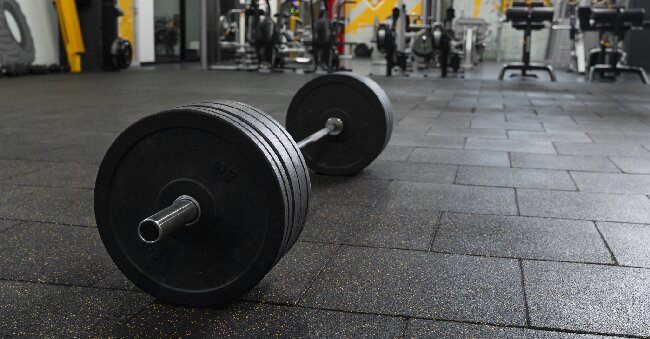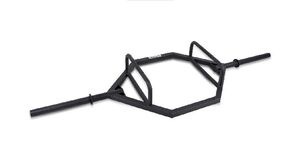
Hex Barbells vs. Standard Barbells: A Deep Dive into Ergonomics and Safety
Are you struggling to decide between hex barbells and standard barbells for your workout routine?
We will explore the key differences between these two types of barbells, including their shape, grip, weight distribution, and versatility.
We will also discuss the safety aspects of using each type, as well as their impact on joint health and muscle engagement.
Whether you’re looking to optimize your deadlifts, squats, bench press, or overhead press, we’ve got you covered. Find out which barbell is the right choice for you!
What Are Hex Barbells and Standard Barbells?
Hex Barbells and Standard Barbells are essential pieces of weightlifting equipment commonly used in fitness and strength training routines. These barbells are designed to help individuals target specific muscle groups and enhance overall physical performance.
Hex Barbells, also known as trap bars, feature a hexagonal shape that provides a more stable grip and reduces the risk of injury during exercises like deadlifts and farmers walks. On the other hand, Standard Barbells have a straight design with uniform weight distribution, making them ideal for exercises like bench presses and squats. Incorporating both types of barbells into a workout routine can offer a well-rounded approach to building strength and muscle mass.
What Are the Differences Between Hex Barbells and Standard Barbells?
The key differences between Hex Barbells and Standard Barbells lie in their design, grip variations, stability during exercises, and the specific muscle groups they activate. Understanding these variances can help individuals choose the appropriate barbell for their workout goals.
Hex Barbells, with their hexagonal shape, provide more stability on the floor than Standard Barbells, making them ideal for exercises like deadlifts and rows. The unique shape of the hex bar also allows for a neutral grip, reducing strain on the wrists and shoulders.
On the other hand, Standard Barbells offer a wider range of grip options, allowing for variations in hand placement which can target different muscle groups during exercises like bench press or curls.
Shape and Design
The shape and design of Hex Barbells and Standard Barbells play a crucial role in how they are utilized during weightlifting exercises. Hex Barbells feature a unique hexagonal shape that prevents rolling, offering stability during workouts, whereas Standard Barbells and Dumbbells typically have a traditional circular form.
The hexagonal shape of Hex Barbells provides multiple flat sides that keep them stationary on the floor, making it easier to load and unload weights without the risk of them rolling away. This design feature also enhances maneuverability during exercises like deadlifts and rows, as the flat sides prevent unwanted movement.
In contrast, the circular shape of Standard Barbells and Dumbbells may require extra caution and attention to prevent accidental rolling, especially when setting them down between sets.
Grip and Stability
The grip and stability of Hex Barbells and Standard Barbells are crucial factors that influence the effectiveness of weightlifting exercises. Hex Barbells are designed with non-slip features and ergonomic hand placements, thanks to their hexagon head, providing users with enhanced grip strength and control during workouts.
In addition to the non-slip properties, the unique hexagon design of Hex Barbells also allows for more stable positioning during lifts, reducing the risk of slippage and ensuring proper hand alignment.
This feature not only enhances grip strength but also promotes better overall stability and control over the weight. By focusing on maintaining a solid grip and stable hand placement, individuals can optimize their performance and minimize the chances of accidents or injuries while engaging in various barbell exercises.
Range of Motion
The range of motion offered by Hex Barbells and Standard Barbells impacts the effectiveness of various weightlifting exercises. Hex Barbells provide enhanced maneuverability, promoting proper joint alignment and form, which is essential for optimizing muscle activation and preventing injuries during workouts.
Proper body mechanics play a crucial role in weightlifting, and the design of Hex Barbells facilitates maintaining the correct posture throughout each movement. By allowing for a comfortable grip and improved wrist positioning, Hex Barbells enable lifters to execute exercises with greater control and stability. This enhances the mind-muscle connection, ensuring that the targeted muscles are engaged efficiently. The full range of motion achievable with Hex Barbells not only enhances muscle development but also aids in injury prevention by reducing the stress placed on joints and connective tissues.
Weight Distribution
The weight distribution of Hex Barbells and Standard Barbells plays a vital role in engaging different muscle groups and stabilizing muscles during weightlifting movements. Hex Barbells are designed to provide balanced weight distribution, ensuring that various muscle groups are effectively targeted and stabilizing muscles are engaged for improved strength and control.
This balanced weight distribution in Hex Barbells is crucial as it helps distribute the load evenly across muscle groups like the quadriceps, hamstrings, glutes, and calves, promoting a more symmetrical development.
By engaging stabilizing muscles such as the core, shoulders, and back, individuals can enhance their overall strength and prevent injuries.
Proper weight distribution also aids in maintaining proper form and technique, leading to more effective workouts and reduced risk of strains or imbalances in muscle development.
Versatility
The versatility of Hex Barbells and Standard Barbells makes them ideal choices for a wide range of strength training and resistance training exercises. These barbells can be used in various gym settings and workout programs, catering to the diverse needs of fitness enthusiasts and professionals.
Their unique design allows for a stable grip, making them perfect for exercises like deadlifts, squats, and bench presses. Whether you prefer the hexagonal shape for added stability or the classic round shape of standard barbells for traditional lifts, both options offer durability and reliability.
With the ability to easily adjust the weight plates, these barbells provide a customizable workout experience, suitable for beginners to advanced lifters. The versatility of Hex Barbells and Standard Barbells ensures that you can integrate them seamlessly into your fitness routine, enhancing strength gains and overall performance.
Which is Safer to Use: Hex Barbells or Standard Barbells?
When considering safety in weightlifting exercises, both Hex Barbells and Standard Barbells have their unique features that impact injury prevention and overall user safety. Understanding the risks associated with improper form and technique is crucial in determining the safer option between the two types of barbells.
Hex Barbells, with their hexagonal shape, provide stability during exercises, reducing the risk of the barbell rolling away and causing injury. On the other hand, Standard Barbells are versatile but require proper balance control to prevent accidents. Safety features like knurling on the barbell surface enhance grip, minimizing slippage. It’s essential for lifters to maintain proper posture and movement mechanics to avoid strains or sprains. Following a progressive training plan and utilizing spotters for heavy lifts further promotes a safe lifting environment.
Risk of Injury
The risk of injury associated with Hex Barbells and Standard Barbells varies based on factors such as user experience, fitness level, and exercise proficiency. Fitness enthusiasts should be aware of potential injury risks and take necessary precautions when utilizing these barbells in their workout routines.
One key consideration is the distribution of weight in Hex Barbells, which may impact stability during exercises. Beginners or individuals with limited strength may find Hex Barbells more challenging to control, increasing the risk of accidents or strain.
Standard Barbells, on the other hand, offer a more traditional design with evenly distributed weight, providing a more balanced feel. To mitigate injury risks, it’s essential for users to focus on maintaining proper form, gradually increasing weight loads, and seeking guidance from fitness professionals when necessary.
Proper Form and Technique
Maintaining proper form and technique while using Hex Barbells and Standard Barbells is crucial for maximizing muscle activation, ensuring joint alignment, and minimizing the risk of strains or injuries. Users should focus on executing exercises with correct form to enhance performance and prevent potential health issues.
By paying attention to details like grip placement, body positioning, and range of motion, individuals can optimize muscle engagement and effectively target specific muscle groups. For instance, maintaining a neutral spine during deadlifts not only reduces the risk of back injuries but also ensures proper activation of the hamstrings and glutes. Proper form promotes balanced muscle development and reduces the burden on surrounding joints, ultimately leading to more efficient and safer workouts.
Stability and Control
Stability and control are key factors that determine the effectiveness of workouts with Hex Barbells and Standard Barbells. Improving grip strength, engaging in stability exercises, and focusing on maintaining control over the barbell movements can enhance overall performance and reduce the risk of accidents.
Having a strong grip not only allows the individual to lift heavier weights more comfortably but also plays a crucial role in preventing the barbell from slipping during exercises.
By incorporating stability exercises into the workout routine, one can improve proprioception and balance, which are essential for maintaining proper form and minimizing the risk of injuries.
Focusing on control throughout the entire range of motion helps in targeting the intended muscle groups effectively and avoiding any unnecessary strain on joints or muscles.
Which is More Ergonomic: Hex Barbells or Standard Barbells?
When evaluating the ergonomic aspects of Hex Barbells and Standard Barbells, factors such as comfort, ease of use, and wrist strain play a significant role in determining the user-friendliness of these barbells. Understanding the ergonomic benefits of each type can help individuals make informed decisions based on their preferences and workout needs.
Hex Barbells, with their unique hexagonal shape, offer advantages in terms of stability and preventing rolling during exercises, enhancing safety and ease of use.
On the other hand, Standard Barbells, with their traditional cylindrical design, may provide a more familiar grip for some users. The potential for wrist strain could be higher when using Standard Barbells, especially during movements that require a pronated grip.
Therefore, individuals should carefully consider their comfort level and risk of wrist strain when choosing between these barbell types.
Impact on Joints and Muscles
The impact of Hex Barbells and Standard Barbells on joints and muscles is a critical consideration when assessing their ergonomic qualities. Proper joint alignment, muscle engagement, and ergonomics can contribute to a more comfortable and effective workout experience for users.
Ensuring that joints are correctly positioned during exercise not only reduces the risk of injury but also optimizes muscle activation, leading to more efficient strength gains. Hex Barbells, with their unique shape and design, can provide enhanced stability and control, promoting better alignment and muscle engagement compared to traditional Standard Barbells. This emphasis on ergonomic design plays a significant role in alleviating strain on joints and enhancing the overall effectiveness of resistance training routines.
Comfort and Ease of Use
Comfort and ease of use are essential factors that differentiate Hex Barbells and Standard Barbells in terms of ergonomic suitability. The adaptability of these barbells to different body types, along with comfortable grip features, can significantly enhance the overall workout experience for individuals.
By providing options for users to choose barbells that best suit their body type and preferences, Hex Barbells and Standard Barbells ensure that individuals can perform their exercises with optimal comfort and safety. The ergonomically designed features of these barbells help in reducing strain on the wrists, elbows, and shoulders during weightlifting routines, promoting proper form and reducing the risk of injuries. The variety of grip options available on both Hex and Standard Barbells allow users to switch between grips seamlessly, accommodating different exercises and enhancing versatility in training sessions.
Adaptability to Different Body Types
The adaptability of Hex Barbells and Standard Barbells to different body types is crucial for ensuring user comfort and effective workouts. Individuals may have personal preferences based on their body structures, and selecting the barbell type that aligns with their unique needs can optimize their training experience.
For instance, individuals with broader shoulders may find the Hex Barbells more comfortable as they provide a wider grip, allowing for better stability during exercises like squats and deadlifts. On the other hand, those with narrower frames might prefer the Standard Barbells for a more natural hand placement. This customization not only enhances comfort but also helps in achieving proper form and maximizing muscle engagement, ultimately leading to more efficient workouts and better results.
Which is Better for Specific Exercises: Hex Barbells or Standard Barbells?
Determining the suitability of Hex Barbells or Standard Barbells for specific exercises like Deadlifts, Squats, Bench Press, and Overhead Press involves evaluating factors such as grip, stability, and muscle activation. Understanding the nuances of each barbell type can assist individuals in choosing the optimal equipment for their workout routines.
Hex Barbells are known for their unique shape, featuring six sides that prevent rolling and provide enhanced stability during exercises like Deadlifts, Squats, Bench Press, and Overhead Press.
On the other hand, Standard Barbells offer a traditional round design, allowing for a more natural grip. The choice between these two types of barbells can significantly impact muscle activation and overall performance, depending on the specific exercise being performed.
Deadlifts
Hex Barbells and Standard Barbells offer unique benefits for Deadlift exercises that target multiple muscle groups, especially the lower back and legs. The choice between these barbells can impact factors such as back support, grip strength, and overall exercise efficiency during Deadlift workouts.
Hex Barbells, with their hexagonal shape providing stability, are excellent for beginners or those focusing on perfecting their Deadlift form. The angled sides of the hex bar allow for a more natural hand position, reducing strain on the wrists and elbows.
On the other hand, Standard Barbells, with their straight design, challenge grip strength and forearm muscles more intensely, making them ideal for advanced lifters looking to enhance their overall strength and muscle activation in the posterior chain.
Squats
The use of Hex Barbells and Standard Barbells in Squat exercises can influence resistance training outcomes by targeting major muscle groups like quadriceps and glutes. Understanding how these barbells affect joint alignment, stability, and muscle activation during Squats is essential for optimizing workout effectiveness.
-
Hex Barbells, with their unique shape and design, offer added stability and balance during Squats, which can help in maintaining proper form and reducing the risk of injuries.
-
On the other hand, Standard Barbells provide a more traditional approach to resistance training, focusing on building strength and muscle mass through controlled movements.
Both types of barbells play a crucial role in engaging the core muscles and promoting overall body alignment while performing Squats.
Bench Press
Hex Barbells and Standard Barbells are integral for Bench Press workouts that target the chest, shoulders, and triceps muscles. Choosing the appropriate barbell type can impact muscle activation, chest development, and overall performance during Bench Press routines.
-
Hex Barbells, with their unique hexagonal shape, provide stability and prevent rolling during lifts, making them excellent for beginners and those focusing on form.
-
On the other hand, Standard Barbells offer a traditional feel and are favored by seasoned lifters for more advanced techniques.
Understanding the differences between these barbells can help individuals tailor their Bench Press training to meet specific goals, whether it be maximizing chest engagement, increasing shoulder stability, or enhancing overall strength and muscle development.
Overhead Press
The Overhead Press exercise with Hex Barbells and Standard Barbells targets the shoulders, triceps, and upper back muscles, influencing muscle activation and shoulder health. Understanding the impact of barbell choice on shoulder stability, muscle engagement, and exercise performance is essential for effective Overhead Press routines.
While both Hex Barbells and Standard Barbells can be utilized for Overhead Press workouts, each option offers distinct benefits.
-
Hex Barbells, with their hexagonal shape, provide increased stability and prevent rolling, allowing for a more secure grip and enhanced control during the movement.
-
On the other hand, Standard Barbells, with their traditional cylindrical design, offer a balanced distribution of weight, challenging the stabilizing muscles to a greater extent.
Choosing the appropriate barbell based on individual preferences and training goals can significantly impact the effectiveness of Overhead Press exercises.




No Comments